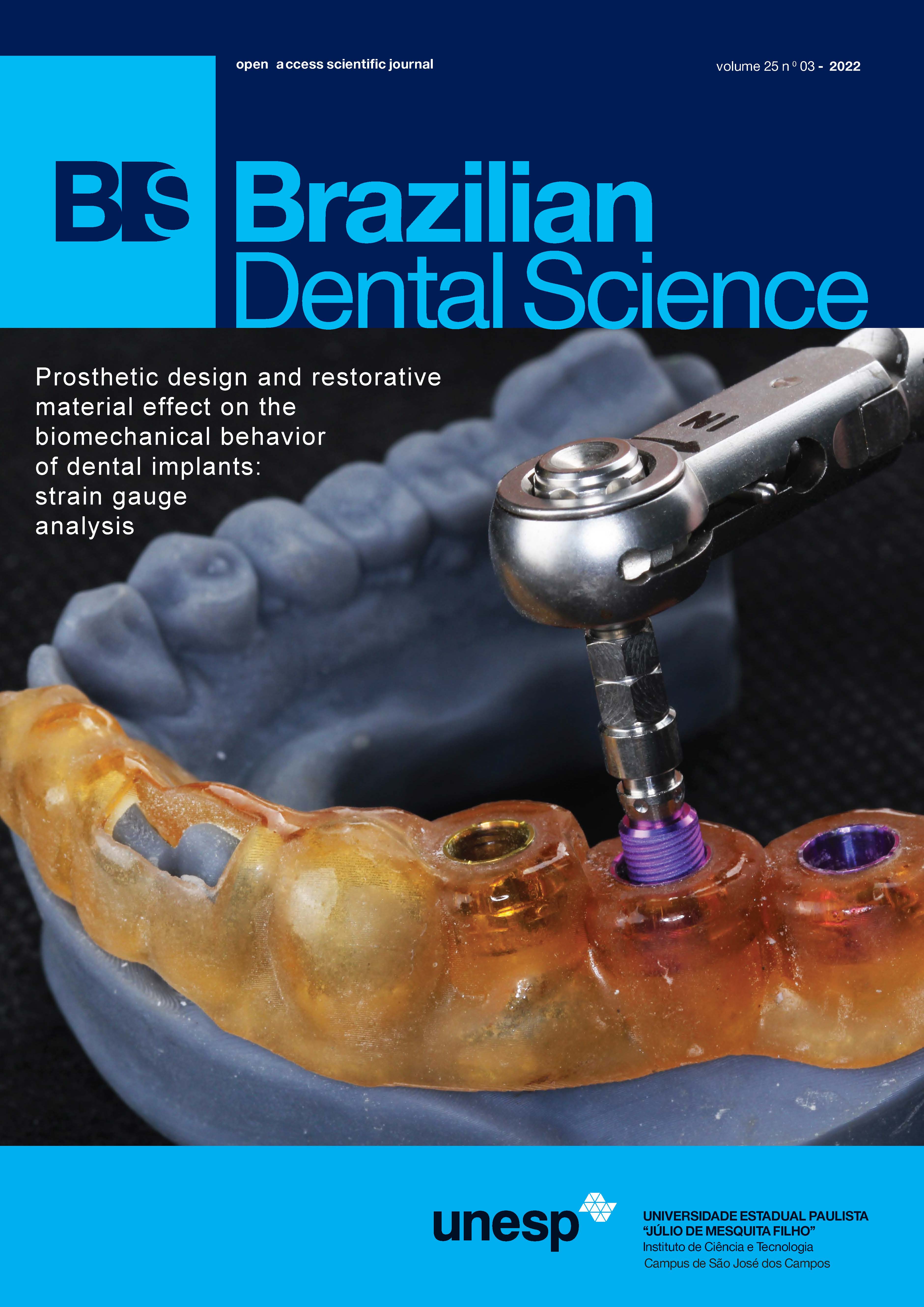Guided endodontic access of severe calcified tooth without incisal edge – case report
Guided endodontic access
DOI:
https://doi.org/10.4322/bds.2022.e3145Resumen
Pulp tissue may suffer calcification because of trauma, operative procedures or carious lesions. This paper aimed
to report and discuss the guided endodontic access as an alternative treatment. A 52 years old female patient had
severe root canal calcification of tooth #11 associated with a radiolucent periapical lesion. Firstly, the crown and
metal post and core were removed. A digital impression and cone-beam computed tomography “CBCT” scans
were performed and imported to implant planning software (SimPlant Version 11; Materialise Dental, Leuven,
Belgium).The guided endodontic access template was designed to allow the drill to reach a distance of 2 mm
short of the apical foramen, once printed, it was tested in the mouth to evaluate its insertion and stability in the
dental arch. The calcified root canal was penetrated using the access drill rotating by a low-speed hand-piece
(10,000 rpm) under saline solution irrigation through advancing movements. Then, the apical foramen was
negotiated with C-Pilot files #10 and #15. The working length was measured using the iPex-II apex locator.
The instrumentation was carried out with Reciproc R50 and 2.5% sodium hypochlorite. One week later, a fullceramic
crown preparation was performed, and polyvinyl siloxane impression was carried out. A total of three
follow-up sessions were performed after one week, one and twelve months. Bone neoformation was observed in
the site of the periapical lesion and the patient had no signs or symptoms of any discomfort. Therefore, guided
endodontics is indicated for severe calcified root canals.
KEYWORDS
Guided endodontics; Calcified root canals; Access cavity.
Descargas
Descargas
Publicado
Cómo citar
Número
Sección
Licencia
Brazilian Dental Science uses the Creative Commons (CC-BY 4.0) license, thus preserving the integrity of articles in an open access environment. The journal allows the author to retain publishing rights without restrictions.
=================
COPYRIGHT TRANSFER AND RESPONSIBILITY STATEMENT
(PDF)
For all articles published in the BDS journal, copyright is retained by the authors. Articles are licensed under an open-access Creative Commons CC BY 4.0 license, meaning that anyone may download and read the paper for free. In addition, the article may be reused and quoted, provided that the original published version is cited. These conditions allow for maximum use and exposure of the work while ensuring that the authors receive proper credit. All metadata associated with published articles is released under the Creative Commons CC0 Universal Public Domain Dedication.
Before the submission, authors must obtain permission to reproduce any published material (figures, schemes, tables, or any extract of a text) that does not fall into the public domain or for which they do not hold the copyright. Permission should be requested by the authors from the copyright holder (usually the Publisher, please refer to the imprint of the individual publications to identify the copyright holder).
The authors hereby attest that the study is original and does not present manipulated data, fraud, or plagiarism. All names listed made a significant scientific contribution to the study, are aware of the presented data, and agree with the final version of the manuscript. They assume complete responsibility for the ethical aspects of the study.
This text must be printed and signed by all authors. The scanned version should be submitted as supplemental file during the submission process.




























